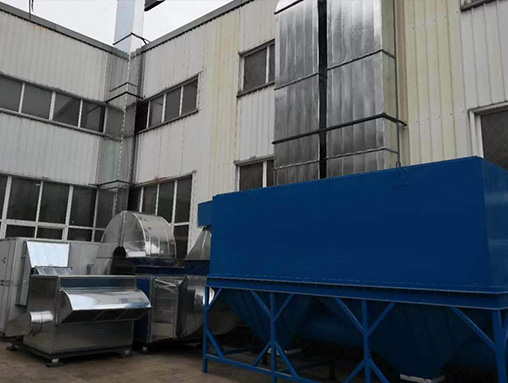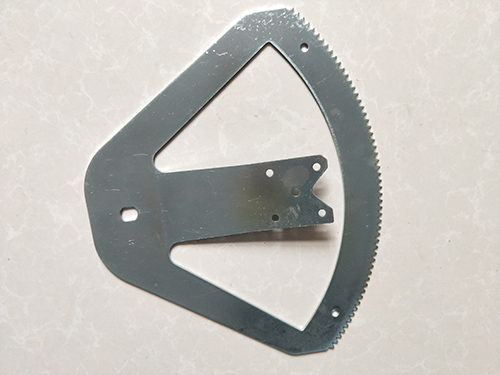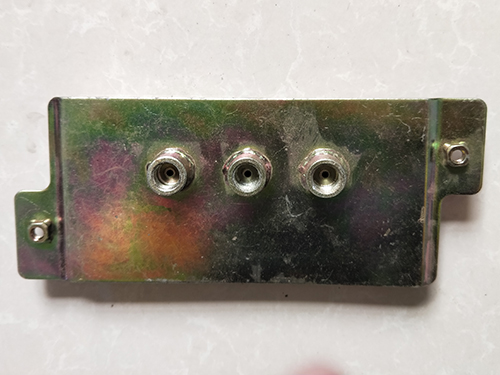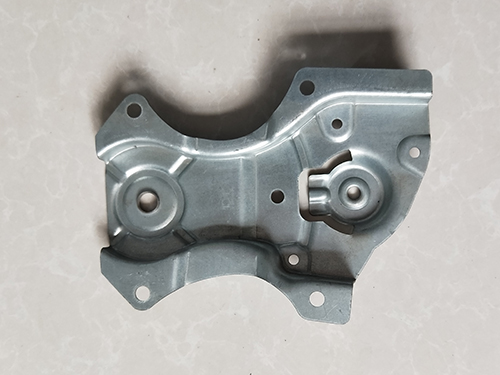Analysis of Manufacturing Process for Automotive Stamping Parts
The process of stamping technology is related to the design of the mold, and the good structural design of the mold provides the stamping process. Usually, changes to the stamping process can cause defects such as mold scrap or rework. Due to the existence of differences, there are diverse options for the production of parts to choose from. In the manufacturing of automotive stamping parts, the process needs to be combined with relevant principles, such as production, technicality, economy, etc. The selection of parts should be completed according to relevant requirements, so that the parts that meet the requirements can be combined with good manufacturing processes to present economic effects and technological creation effects. Therefore, for automotive stamping parts; Analyzing the process is important.
1. Analyze the stamping part diagram
The basis for analyzing and formulating stamping process plans is the product part drawing. Therefore, when analyzing and designing the stamping process, it is necessary to start from the part drawing, mainly considering the economic and technical aspects of the stamping part drawing.
1.1 Economy
The application of stamping processing is quite extensive, and this process is easy to operate with high productivity. In stamping processing, its economy is impacted by the high cost of molds, which affects the production batch. The processing cost of batch and stamping single pieces is inversely proportional, and the smaller the batch, the higher the cost. Therefore, if the production of parts is limited, it is more economical to produce them through other methods. Therefore, in the production of stamping parts, the production schedule should be combined to achieve greater economic efficiency in the manufacturing of stamping processes.
1.2 Craftsmanship
The manufacturing process of stamped parts reflects the difficulty of the parts. From a process perspective, it mainly analyzes precision, material properties, dimensions, etc. The basic requirements should comply with the stamping process. In addition, the good embodiment of craftsmanship lies in its easy operation, fewer processes, stable quality, and low material consumption. In general, stamping parts will affect the stamping process in terms of structure and accuracy. If the part has poor processability, the part drawing should be appropriately modified to ensure processability.
2 Stamping process
2.1 Basic stamping process
The processes of flanging, cutting, punching, etc. are more common in the stamping process. Each process has its own characteristics, and the differences are significant. For the holes in flat parts, the main processes include cutting, cutting, and punching, while for open cylindrical parts, the deep drawing process should be included. For specific parts, relevant calculations and analysis are required to determine the nature of the process. The stamping parts of the oil seal outer clamping ring and inner clamping ring have differences in outer diameter and straight edge height. After calculation and analysis, the stamping process of the outer clamping ring includes flanging, deep drawing, cutting, and punching, while the inner clamping ring only needs to remove the deep drawing process.
2.2 Determine the number of stamping cycles
The stamping frequency mainly refers to the number of repetitions of the same process. If it is a deep drawing process, the number of deep drawing times can be determined by calculating the shape, characteristics, etc. of the material; The flanging process can be determined by calculating the degree of deformation and size of the material to determine the number of steps. To appropriately reduce the number of processes and leverage the plastic characteristics of materials, the sequence of processes should be arranged reasonably based on the quality of the processes.
2.3 Process combination
The manufacturing of stamped parts can generate multiple processes, so when setting the process plan, attention should be paid to the combination of processes, which can be a single process or a combination of multiple processes. The factors such as precision, size, and production batch size of stamped parts are related to the selection of molds. If the production has a large-scale nature, the stamping process should be combined and implemented, and composite or continuous die stamping should be selected; For small-scale production, simple process molds should be selected. If the size of the stamped part is too small, using a single process will reduce productivity and be inconvenient, so composite or continuous die stamping should be selected.
Design of Process Plans for Three Processes
The design of the stamping process plan should be based on the overall part process plan, determining the processing method for specific processes, and determining the process parameters in the process. In the stamping process, the forming is the main basis for calculating the process, such as the radius of the bent part, the height of the flange, etc; Determine the shape, size, and appropriate cutting method of the blank, calculate the utilization rate of materials, determine the forming force of the process, determine the time and materials required for the process within the range, and draw the workpieces for each process through relevant calculations.
Design of 4 molds
4.1 Determination of mold structure form and type
After the process plan of stamping parts is established, the selection of single die, compound die and continuous die shall be determined based on simple operation. The structural form, strength and life requirements of the die shall be coordinated with its type. In composite molds, strength issues are quite common, mainly manifested in situations where punching, flanging, and material dropping are concentrated. If the flanging height is small, the strength requirements cannot be met.
4.2 Selection of workpiece positioning method
The design benchmark is related to the positioning benchmark, which should coincide with the former. Otherwise, the tolerance should be reassigned, and the process dimensions are obtained by converting the design dimensions. But this method has high requirements for the machining accuracy of parts. When stamping different molds in multiple processes to produce parts, the consistency of the process benchmark should be ensured. If positioning is required, a selection should be made. During stamping, the positioning surface should be based on the principle of no deformation or movement. The different shapes of the parts will cause corresponding changes in the positioning surface. Flat parts are more suitable for positioning with one or two holes, while shape positioning is more suitable for curved parts. For deep drawn parts, flange positioning should be selected.
4.3 Production Standards
In the production process of mold working parts, there are standards that should be followed in terms of calculation, positioning, pressing, and fastening. If the wall thickness punch is small and long, and the concave die is thin, it should be checked to determine the size and structure of the concave die, and designed according to the selection of the perimeter mold frame. The closing height, size, and pressure of the mold should be adapted to the relevant equipment, and a sketch of the mold structure should be drawn.
4.4 Draw the overall assembly diagram of the mold
Use the mold structure sketch as a strong foundation to draw the overall assembly diagram. In the assembly drawing, the relationships between parts should be clear and concise, and relevant sectional and projection drawings should be presented. Draw the workpiece diagram, indicate the relevant requirements, and fill in the part details.
4.5 Draw mold part drawings
According to the overall assembly drawing, disassemble and draw the mold parts drawing, and mark the materials, tolerances, dimensions, and heat treatment on the parts drawing.
5 Reasonable Selection of Stamping Equipment
Based on the requirements of punching force, mold closure height and structure, part characteristics, and stamping process characteristics, and taking into account the existing equipment, establish a relationship between equipment selection and mold design work, determine the required quantity of equipment, and select equipment types. If the equipment is not large and the calculation result of the punching force is relatively small, but the mold size is large, a larger equipment can be selected, and the size and structure of the mold should be adapted to the closing height and leakage hole size of the equipment. There are several aspects to consider in the design of the mold. Firstly, to balance the die, the axis of the die handle needs to be activated, and the center of the die pressure should be aligned with the center line of the press slide to prevent unconventional wear; Secondly, for deep drawing molds, it is necessary to calculate the deep drawing work and verify the motor power; Thirdly, in the bending and deep drawing processes, the engineering is relatively large. In order to make it more convenient to remove the workpiece and prevent the blank, it is necessary to check the stroke of the press, which is within a specific range.
Cars have gradually penetrated into daily life and become an important means of transportation in the increasingly developing technological era. The universality of its application cannot be ignored. Although there are gaps between domestic technologies, there is still great room for improvement in automotive manufacturing processes. The degree of automobile stamping manufacturing can be regarded as the main manufacturing component of automobiles, and the stamping part manufacturing process is related to the development of the automobile industry. Therefore, the improvement of stamping part technology is an important step in the improvement of automobile manufacturing technology. Attention should be paid to stamping processes, stamping part drawings, scheme design, and other aspects to ensure the development of automobile stamping part technology.







